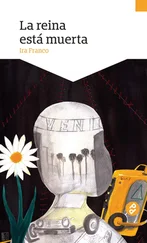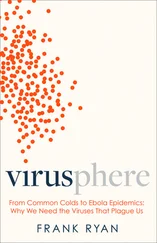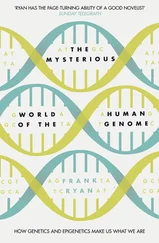In addition to his chair in zoology, Yates was also the director of an important biological field reserve in New Mexico, known as the “Sevilleta”, where biologists are conducting one of the most comprehensive ecological surveillance programmes in history. This, in major part, is where the gigantic collection of mammals in the museum has come from. Yates was a world-famous expert in mammalian evolution. He did not focus, as most biologists do, on a single species or even a genus. His interest lay in evolutionary systematics: in the patterns and processes that lead to the diversity of animal species and how this gives rise to the branching tree of their evolution. The outbreak of the Sin Nombre hantavirus epidemic in his own back yard added a new, and unforeseen, practical significance to the theoretical work he and his team had been engaged in for decades. Not only could Yates and his fellow scientists look for the hantavirus in living deer mice, but they could also extract viral sequences from the vast trawl of carcasses stored in the museum and from there they could trace important facts about the virus’ own evolution. What then, I ventured to ask him, was the ultimate purpose of this exercise?
‘We’re interested,’ he told me, ‘in the co-evolutionary potential of the hantavirus as it evolves in direct parallel with the host.’
His reply surprised me. Like most doctors, I thought of viruses as nothing more than parasites. I was taught modern Darwinian evolution as part of the core biology that underpins our understanding of medicine. Lay people often confuse viruses with bacteria but they are radically different organisms. Most viruses are a lot smaller than bacteria, so small in fact that most are completely invisible even under the highest magnifications of the light microscope. Only through more subtle detective work, using immunological probes, or molecular chemistry, or, ultimately, the vast magnification of the electron microscope, can we bring them into focus. In their genetic arrangements viruses also differ markedly from bacteria. Their DNA is usually packaged in the linear clusters we call genes, rather like our own, while the DNA of bacteria is packaged in a single ring. Viruses are also the ultimate masters of evolution through mutation. They mutate with astonishing speed, something like a thousand times faster than bacteria, which in turn mutate approximately a thousand times faster than we do. Mutation of this order is an important consideration for medicine since it is one of the ways in which bacteria and viruses become resistant to antibacterial and antiviral drugs. For example, it is the key to understanding resistance to therapy in conditions such as AIDS and tuberculosis, where the phenomenal mutational capacity of the HIV-1 virus and the tuberculosis bacterium means that we are obliged to prescribe a cocktail of different drugs to control them.
In this conversation with Terry Yates, I discovered that many different species of rodents around the world appeared to have hantaviruses that infected them. The first hantavirus ever discovered came from a rodent in Korea – it emerged close to the Hantaan River, which gave its name to the genus of viruses as well as to the human illness the virus caused, which is known as Hantaan fever. So when Yates told me he was looking into the evolutionary aspects of the hantaviruses, I presumed that he was talking about mutation. I knew nothing about the co-evolution of a virus in parallel with its host. Indeed, I was still thinking along the conventional medical and evolutionary lines when I asked him another question.
‘What do you perceive as a virus?’
‘That’s a good question. Some people will argue that viruses are not life. I disagree with that, certainly. Perhaps a more pertinent question to me is not “what is a virus?” but “what is a species as far as a virus goes?” Are there species of viruses analogous to mammalian species? Basically I am only recently into viruses. I became interested, almost accidentally, because of the work we do with mammals. It just happens that mammals are the main reservoirs of these viruses. So for me the question “what is a species when it comes to viruses?” is best understood in the context, are they evolving, and are they co-evolving with their reservoir organism? I think that viruses are lineages that have their own evolutionary trajectory and their own historical fate. By analysing the history of that evolution and studying the branching patterns of those viral lineages, we can define viruses based on the branches of the tree. And when we look across the board at these hantaviruses, our evolutionary analysis thus far has shown a very tight correlation between the evolutionary tree that illustrates the history of the mammalian host and the evolutionary tree that illustrates the history of the viruses.’
This still made little sense to me in the way I had been educated to think about viruses, not from the medical perspective and not, as I was already beginning to suspect, from the evolutionary perspective.
‘When you say you are studying the virus, do you imply studying its genome?’
Here I should explain, for my non-scientific readers, that a genome is the sum total of all the genes of a life form. While all other forms of life, including humans, have genes coded by DNA, viruses can be coded by DNA or, as in the case of the hantaviruses, by its sister molecule, RNA.
‘Studying its genome,’ he confirmed, ‘or any other characters that would be applicable. They are such simple organisms that – for example, in the case of hantavirus – to get enough characters to be able to understand the evolution of the virus, the best thing to use is the RNA sequences. So we’re having better luck with this because each of the bases in the RNA sequences is applicable.’
‘How do you manage to do that? Have you been studying the viral genome as and from when you first noticed it, or have you some way of going back in time to see what the virus was like some time ago?’
‘That’s a complicated subject and one that has been debated at the Natural History Museum at the exhibit on the evolution of man. We use a methodology called Cladistics. It’s basically a phylogenetic analysis [tree of life analysis] of the different lineages of viruses.’
‘This is where you observe them in different species?’
‘Not exactly, no. We’re talking about [analysing sequences over] enormous periods of time here. We have been successful in extracting viruses from our frozen tissue collection and we are having success with extracting DNA from fossil organisms. People have successfully amplified and sequenced DNA from plants that were embedded in Miocene rocks – these are 30-million-year-old plants. So what you can do with this phylogenetic analysis is take a viral sequence from a hantavirus of the Four-Corners deer mouse and compare that to other species of viruses that occur on other branches [of the parallel virus-rodent trees]. From this you can extrapolate what the historical condition was. So we can trace the evolutionary sequence back in time and make comparisons to other lineages that diverged from the lineage you are interested in, much earlier in time.’
The implications were slowly dawning on me. ‘So you see a link between the virus and the mammal that is very close?’
‘That’s right. For example, if we were looking at eutherian mammals [the placental mammals including humans], we might compare the sequences of eutherian viruses to those of the marsupials and egg-laying mammals, which are more ancient.’
‘Because they are similar, but not the same viruses, you raise the question that sometime in the past, just as the animals had a common ancestry, perhaps their viruses might also have had their own common ancestry?’
Читать дальше












